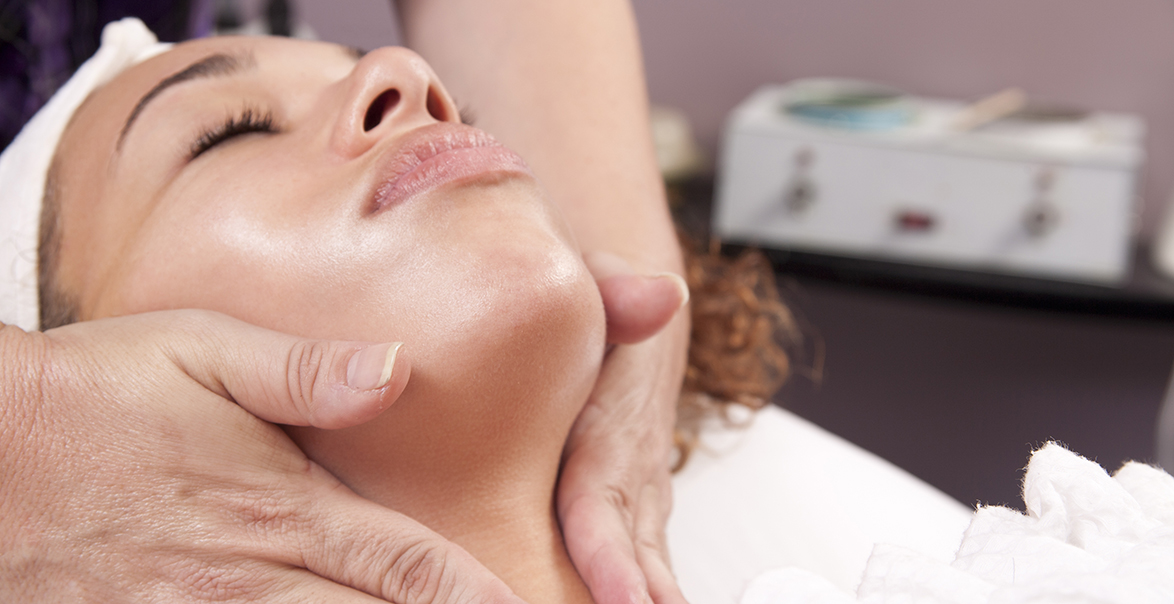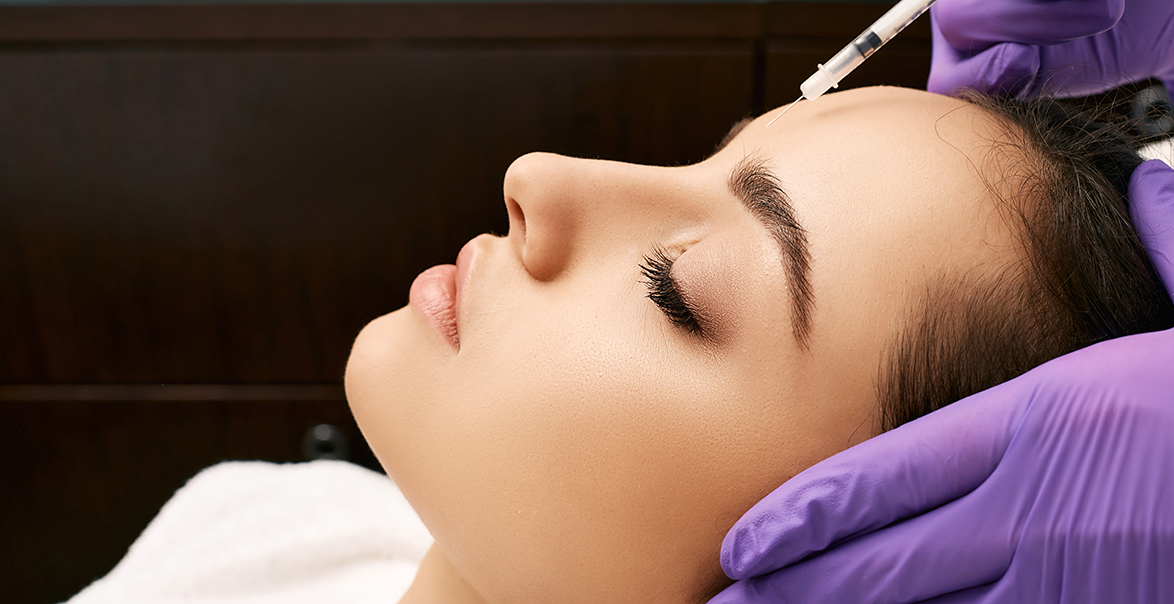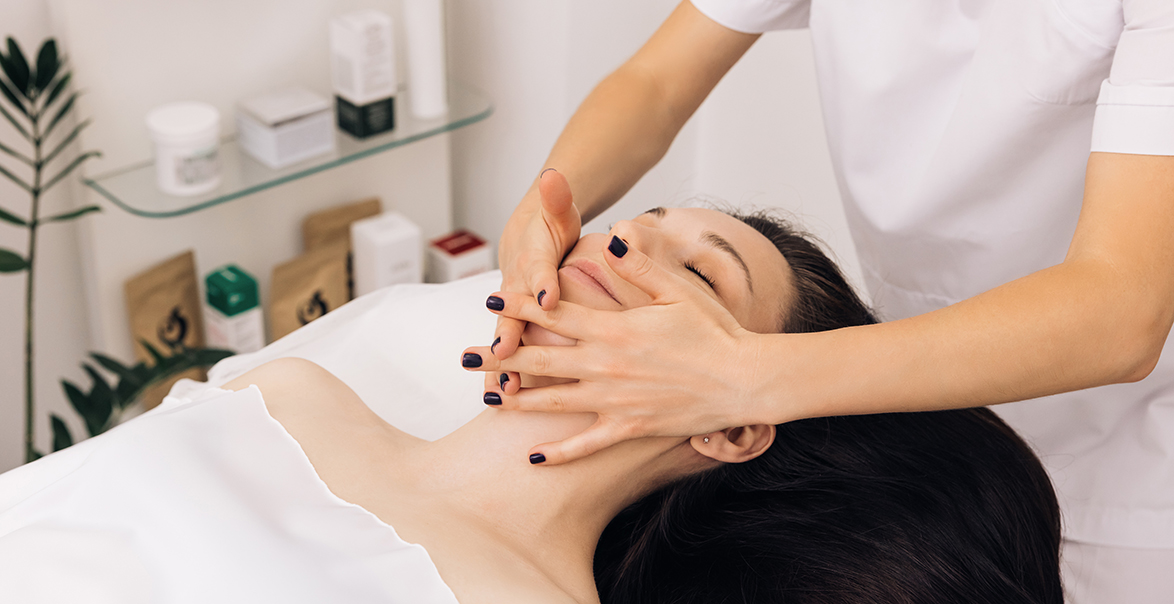Taking care of your skin necessitates specialized knowledge and training. Many clients turn to an esthetician’s experience for advice on how to preserve their healthy skin. These professionals work in either a spa or a medical center and use their skills to give facials, chemical peels, makeup consultations, and hair removal. If you’re interested in making this career you might be wondering, how to become a medical esthetician.
Medical estheticians are licensed skincare experts who work in a clinical environment. They work in dermatology offices, plastic surgery clinics, hospitals, and medical spas as medical estheticians. Although the word “medical” is used in the title, although there are no legal criteria for medical training. Cosmetology or esthetician school graduates must obtain state licensure and undergo medical esthetics study to be considered a medical aesthetician. Estheticians frequently seek specialized training in medical clinics, hospitals, or dermatology offices to learn how to utilize lasers for skin treatments or hair removal.
According to the U.S. Bureau of Labor Statistics (BLS 2021), skincare specialists—a profession that includes medical estheticians—will experience a 29 percent growth in job openings nationwide between 2020 and 2030, with 19,800 new employment opportunities available.
The path to becoming a medical esthetician is outlined below, along with a step-by-step tutorial on how to get started in this career, the top schools of study, and an overview of typical job responsibilities.
What Is a Medical Esthetician?
State board-recognized aesthetician is a term used to describe a licensed skin care expert who works in hospitals. They offer skin care treatment and makeup suggestions to individuals who have suffered from any kind of sickness, injury, or operation that has altered their appearance. A medical aesthetician must have a state-approved cosmetology program and study skin diseases and treatments while training. Aestheticians must be licensed in all states (except for Connecticut), which generally entails passing a written and sometimes a practical, examination.
Medical Esthetician Specializations & Degree Types
Esthetician schools, two-year colleges, and cosmetology schools offer cosmetic medicine programs that lead to an esthetician license. To work as a skincare professional, you need to acquire the necessary skills through classroom study and hands-on training. To be eligible for state licensure, students must complete a predetermined number of hours. Students must complete a set number of treatments to demonstrate competence and expertise to complete their degree.
After completing their basic esthetician course, students may pursue more training and become specialized medical estheticians. Cosmetic dermatology is a branch of dermatology that focuses on the diagnosis and treatment of disorders, skin cancer, and aesthetic concerns. Cosmetic dermatology can include both medical and surgical procedures like laser hair removal or collagen injections.
If you are interested in how to find an esthetician school near you, read our other blog here.
Admissions Requirements for Medical Esthetician Programs
Esthetician programs have various entrance requirements based on the location, quality, and duration of the program. The majority of institutions simply need applicants to have completed high school or received a GED.
How Long Does it Take to Become a Medical Esthetician?
After graduating from high school, you may enroll in a bachelor’s degree program for aestheticians. The duration of the course is between nine and a year after graduation from high school. It might take additional time to complete state licensing or accreditation.
Learn More
How To Become a Medical Esthetician – Step-by-Step Guide
Step 1: Graduate From High School or Complete a GED (Four Years)
To enroll in most medical esthetician programs, candidates must complete high school or obtain a GED. Students should concentrate on biology, chemistry, and anatomy courses to prepare for this career.
Finally, classes such as creative writing and psychology can assist medical estheticians in developing skills that will help them do their job well.
Step 2: Complete a Medical Esthetician Program (Nine Months to Two Years)
The time it takes to complete a medical esthetician program is determined by the school or certificate or degree. Cosmetology schools offer certificate programs that may be completed in as little as nine months.
If you’re looking for a career as an esthetician, it’s best to start at a two-year community college. If the student is pursuing an associate degree, esthetician programs at community colleges can last up to two years. Students in all courses participate in a mix of classroom lectures and hands-on training. Many programs’ graduation requirements include obtaining a specific quantity of experience hours and treatments.
Medical estheticians can’t administer medical treatments, but many courses include instruction in medical-related services. Medical esthetician training programs may cover subjects including:
Permanent makeup
Permanent or semi-permanent colors are used to apply lipstick, eyeliner, brow filling, and other forms of make-up in this method. Microblading, the newest area of interest in microblading technology, is frequently included within this category.
Pre- and post-surgical skincare
Medical estheticians assist persons who have experienced skin damage due to burns, abrasions, or other causes. They offer cleaning treatments and advice on how to maintain your skin clean and healthy.
Manual Lymphatic Drainage (MLD)
MLD is a type of light therapy that uses lasers to “boost” the body’s ability to drain lymph nodes, improve blood flow, and enhance circulation. Lymphedema sufferers receive MLD treatments from medical estheticians.
Advanced hair removal
This technique, which employs lasers and intense pulsed light to prevent follicles from developing, is designed for individuals who want to get hair off of specific parts of their body permanently. Medical estheticians, on the other hand, may assist doctors and laser technicians in administering laser resurfacing rather than operating the lasers directly.
Eyelash extensions
The application of semi-permanent glue to synthetic eyelashes is referred to as lash extension or artificial eyelash application. Estheticians must be able to match the thickness, color, and curvature of natural lashes, as well as perform touch-ups regularly.
Step 3: Obtain State Licensure (Timeline Varies)
Estheticians, regardless of whether they are medical or not, must be licensed in all 50 states. According to each state’s requirements, which include completing a set number of hours of supervised practice and obtaining a degree or certificate. To demonstrate competence in the area, most states require passing an exam.
How to Become a Medical Esthetician at NIMA
The National Institute of Aesthetics is the United States’ most prominent source of aesthetic surgery training. Our group of physicians, aesthetic nurses, estheticians, and business experts provides our students with an unrivaled learning opportunity. Our experience distinguishes us as an aesthetic institute—for more than a decade, we’ve run and owned successful med spas throughout the country. We utilize our operational expertise to develop the most up-to-date and effective curriculum for you.
First and Foremost, Our Educators Are Industry Experts
We know that being a medical esthetician takes more than just book smarts. You have to have professional experience in the field! Esthetic educators at The NIMA Institute are trained professionals who have been applying their skills commercially for years. We hire instructors based on their hands-on expertise, ensuring that our students are taught by the best.
When we say “real-world application,” we aren’t kidding. Thousands of estheticians, technicians, business owners, and physicians across Salt Lake City have benefited from our programs because they helped them enhance their clinical results and maximize the success of their businesses.
Learn More
Our Courses Are More Hands-On
Our course schedule is packed with laboratory time, in which our students can apply the skills that they have learned in lectures or labs on human models. This hands-on approach ensures that you will graduate as an expert in your field!
NIMA’s Aesthetics Education and Training curriculum is designed to educate students in the principles of aesthetic medicine, as well as cosmetic procedures such as hair dyeing. Our esthetic-based courses include:
- 900 Hour Nevada Esthetics
- 1200 Hour Utah Master Aesthetics
- 750 Hour Utah Master Aesthetics
- Online Utah Master Aesthetics
- Comprehensive Laser
We Offer a Variety of Products and Equipment
The NIMA Institute is stocked with the finest and most up-to-date equipment and products available in the field. We offer a wide variety of training materials at much lower prices than what you’d find elsewhere. Our course packages include all required texts, equipment, and laboratory fees so there are no hidden costs to worry about!
Do you want to enroll in a nationally accredited esthetic school in Utah? NIMA Institute is the place to go! With NIMA’s numerous courses, including Utah’s 1200 Hour Master Esthetics and Utah’s 750 Hours Master Esthetics, you may become a licensed aesthetician.
Another great benefit of NIMA is that they provide online courses to students all across the country. NIMA’s comprehensive curriculum will teach you how to pursue a career in the beauty industry. Many people pursue NIMA Institute’s MBA program because it will provide them with the knowledge and skills they need to succeed in their new cosmetic job. Many individuals enroll at NIMA University over other institutions because of its good name and world-class instruction. Throughout our website, you’ll learn more about the courses we have to offer at our Utah (esthetics school) aesthetician schools (Salt Lake premier esthetics school).
We Can Design a Unique Solution for You
We are committed to equipping you with the skills you need to have a successful career and practice in the medical aesthetics business. This means that our instructors are accessible to you at all times, even during or after your aesthetic education. We provide clinical, corporate, and business course bundles for our professional students to help you get a complete education in all areas. NIMA provides a wide range of services, tailored to your individual needs. You may work one-on-one with our experts to address any element of your business, including:
- How to start your own medical spa
- How to apply for licensure in the state of Utah
- How to market and advertise your business online or through traditional media outlets
- Corporate consulting on how to improve efficiencies or save money with workplace safety techniques
What Do Medical Estheticians Do?
Estheticians who specialize in plastic surgery, dermatology, and cosmetic procedures use various treatments, including lasers and chemical peels. They operate under the supervision of medical specialists to offer skincare therapies to customers. Typical daily tasks include:
- Working with clients to determine their skincare requirements
- Treatments are provided according to the instructions of a qualified healthcare professional
- Patients should be educated about their skin and given suggestions for goods or therapies if it is appropriate
- Treating patients who have had burns or surgery is a specialty area of expertise
- Providing clients with cosmetic solutions to conceal scars or other skin problems
- Using technologies like lasers to remove hair, rejuvenate skin, or reduce cellulite
- Fillers such as silicone (in some states) are being used to increase the volume of your lips
- Manual lymphatic drainage
Cosmetic Medical Estheticians
Medical estheticians are trained in cosmetic medicine and use procedures to help people improve their appearance after dealing with sickness or trauma. Due to this, they may work in hospitals or rehabilitation centers to assist patients who need assistance with their look following an illness or accident. They may help burn victims deal with delicate skin, people on chemotherapy locate acceptable wigs, and persons with facial abnormalities select the right prosthetic.
Medical Spa Esthetician
Working in these conditions can help your clients feel better and get healthier. Chemical peels, correcting discolorations, treating sun damage, removing unsightly tattoos, and cauterizing varicose veins are all examples of typical tasks.
Medical Esthetician Training Inspector
After working in direct client services for a while, you may wish to change fields. Inspecting medical spas, rehabilitation centers, and other employers of medical estheticians to guarantee that all rules are followed is part of the job of being a training inspector.
Esthetician Careers
Spa Esthetician
Estheticians who work in salons or spas use basic skincare treatments for a variety of clients. Facials, massages, skin peels and resurfacing, hair removal, and product recommendations are all part of daily duties.
Beauty Educator
Beauty instructors visit spas, salons, and other skincare environments to teach both estheticians and their clients about specific products. Estheticians are experts in skin treatments and treatments for wrinkles and other signs of aging. They frequently work for skincare product businesses and use their understanding of esthetics to promote how particular goods may help with healthy, clear skin.
Esthetician Training Teacher
Teaching may be an excellent way to continue using your esthetics skills without having direct contact with clients who want skin treatments if you’re looking to leave the world of client care. Esthetician instructors are generally employed as cosmetology educators or in other education settings to educate the next generation of estheticians. Click here for help in finding your dream master esthetician program. Discover esthetician schools near me.
Medical Esthetician Certifications & Licensure
Students should verify whether or not a state board has licensed aestheticians before enrolling. Because licensure requirements vary by state, students should contact their local board to see if they fulfill the criteria. All states, except Nevada, require applicants to pass an exam and have completed a set number of supervised work hours.
Some states, such as Oregon, offer an advanced aesthetician license, which includes more criteria but allows practitioners to do more advanced non-ablative aesthetic treatments.
Medical estheticians can attain national certifications that demonstrate competence or more advanced training in the field. The National Esthetician Certification from the National Coalition of Estheticians, Manufacturers/Distributors & Associations (NCEA) is one of the most prestigious certifications available. Candidates must purchase the training book (which includes the formal application), get permission to take the test, and finish it online at home to pass. This method generally takes four to six weeks. Check out our 1200 Hour Master Aesthetics Licensure to get started on your future today!
How Much Do Medical Estheticians Make?
Estheticians who specialize in medical treatments fall under the category of “skincare specialists” according to the Bureau of Labor Statistics (BLS May 2020). The average income for the 46,640 skincare experts throughout the country was $41,230 per year, with the following percentiles:
- 10th percentile: $22,850
- 25th percentile: $27,590
- 50th percentile (median): $36,510
- 75th percentile: $48,710
- 90th percentile: $64,610
Medical Estheticians Career Alternatives
Here are a few alternatives to working as a medical esthetician.
Become a Phlebotomist
Physicians use phlebotomists to draw blood for diagnostic testing. To guarantee that the right vials are filled for the required tests, phlebotomists must have excellent attention to detail and they must also have a pleasant demeanor to calm apprehensive patients.
- Typical Education: Certificate or diploma
- Licensing or Certifying Organization: American Medical Technologists (AMT), National Center for Competency Testing (NCCT), and the American Society for Clinical Pathology Board of Certification (ASCP-BOC)
Become a Medical Assistant
Medical assistants are vital to the efficient functioning of a medical center, clinic, or business. For instance, they can handle administrative duties such as billings, scheduling appointments, and checking in patients; they can help doctors with procedures and take vital signs, as well as assist patients and visitors in examining rooms; and they may also work on the medical side, demonstrating patients to examination rooms, taking vital signs, gathering medical history, and assisting physicians.
- Typical Education: Diploma, certificate, or associate degree
- Licensing or Certifying Organization: Certified Clinical Medical Assistant (CCMA) for Certified Medical Administrative Assistant (CMAA) from the National Healthcareer Association, Certified Medical Assistant (CMA) from the American Association of Medical Assistants (AAMA), National Certified Medical Assistant (NCMA) from the National Center for Competency Testing, Registered Medical Assistant (RMA) from the American Medical Technologists
Become a Psychiatric Technician (Aide)
A psychiatrist technician or assistant is a medical specialist who works in a long-term care facility, a correctional center, or a psychiatric hospital to assist those with mental health issues or impairments. They operate in nursing homes, prisons, and hospitals dedicated to the treatment of mental illness. A ward is a unit of intensive care that generally includes one or more rooms, as well as staff and equipment. Ward nurses assist with daily activities such as hygiene, feeding, and group activities under the supervision of a psychiatrist.
- Typical Education: Certificate or diploma
- Licensing or Certifying Organization: American Association of Psychiatric Technicians (AAPT)
Learn More
Final Thoughts on How To Become a Medical Esthetician
In conclusion, esthetics is a process of skincare that uses several techniques to cleanse, exfoliate, and moisturize the skin. Aestheticians are state-licensed health and wellness professionals who have completed a course of education and passed specific state written and practical examinations to earn licensure through their state board of cosmetology or department of health.
If you’d like to learn more, please visit our website or give us a call today! You can even read, How to find esthetician schools near me for more details!







